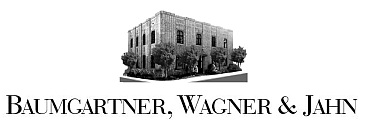Washington is a pure comparative fault state. Under RCW 4.22.005, any contributory fault of the claimant reduces the amount awarded to them by their share of the total fault for the accident. For example, if a plaintiff’s total damages are $100,000 and the plaintiff is 25% at fault, the award to the plaintiff is reduced by $25,000 and defendant is only liable for $75,000.
A defendant can be held liable in a negligence action in Washington, even where the plaintiff bears the majority of fault for the accident. Veit, ex rel. Nelson v. Burlington Northern Santa Fe Corp., 171 Wn.2d 88, 117 (2011). This is what is meant by pure comparative fault. Theoretically, even a plaintiff who is 99% at fault for the accident may recover 1% of their damages from it.
The primary type of comparative fault asserted in a personal injury action is comparative negligence. Comparative negligence is the failure of the person injured to exercise ordinary care for their own safety. Honegger v. Yoke’s Washington Foods, Inc., 83 Wn.App. 293, 296 (1996).
Richardson v. U.S., 835 F.Supp. 1236 (1993), is an example of comparative negligence in an automobile accident case. In this case, the driver of a large truck pulled out from a private driveway in front of the plaintiff, who was traveling on a highway with the right of way, and the plaintiff ran into the truck. The defendant truck driver was negligent in failing to yield the right of way. But the Court ruled the plaintiff was also negligent, because he was intoxicated and should have seen the large truck from far enough back to have stopped in time to have avoided the collision. The Court found that both drivers were equally at fault for the collision, and reduced the plaintiff’s total damages by 50%.
Comparative negligence can also arise in car accident cases where a person voluntarily rides with an intoxicated driver. If a person knows or should know they are riding with a driver that is intoxicated, a reasonable person knowing that and using ordinary care for their own safety would not have ridden in the vehicle, and the driver’s intoxication ends up being a proximate cause of the plaintiff’s injury, then the person is contributorily negligent in doing so. RCW 5.40.060
Comparative negligence is frequently asserted in trip and fall and slip and fall accidents. There is a jury instruction in Washington State that instructs that every person has a duty to see what would be seen by a person exercising ordinary care. WPI 12.06. The defendant property occupier in a slip/trip and fall case will frequently argue the plaintiff was comparatively negligent in not watching where they were walking and seeing whatever hazard that caused them to slip or trip.
Comparative fault may be asserted by a defendant in any personal injury case based on fault. However, comparative fault cannot be asserted by a defendant in a personal injury action based on an intentional act, such as an assault, because Washington Courts hold that fault under the comparative fault statute does not include intentionally caused harm. ESCA Corp. v. KPMG Peat Marwick, 135 Wn.2d 820, 831 (1998); Honegger v. Yoke’s Washington Foods, Inc., 83 Wn.App. 293, 297 (1996).
Intoxication is the one type of fault that is not purely comparative in Washington State. Intoxication can be a complete defense to a personal injury action, if the person injured was intoxicated, their intoxication was a proximate cause of their injury, and the person injured was more than 50% at fault for the accident. RCW 5.40.060.
Another type of comparative fault that may be asserted in a personal injury action is referred to as the failure to mitigate damages. This type of comparative fault is often asserted by defendants in connection with a contention that the plaintiff failed to secure or submit to medical treatment, and that the defendant should not be held liable for damages the plaintiff could have avoided by doing so. RCW 4.22.015.
Comparative fault is an affirmative defense raised by a defendant to reduce their liability for an accident. As it is an affirmative defense, the burden is on the defendant to plead and prove the claimant was also at fault for the accident. Godfrey v. State, 84 Wn.2d 959, 965 (1975).
